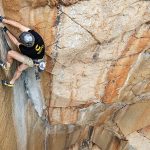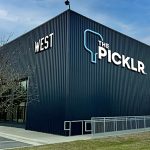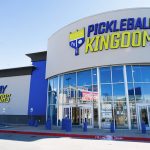Participation in camping declined in 2012 from 2011, The Outdoor Foundation said this week as part of the findings in its annual American Camper Report presented by The Coleman Company, the leading report tracking camping participation in the United States.
The report found that 38 million Americans, or 13 percent of those over age six, participated in camping last year, compared with 42.5 million Americans, or 15 percent of the US population, in 2011.
The Foundation says the 2% fluctuation however, is “not a large concern,” as 2010 saw 14.1 percent total participation; meaning there was about a 1% bump the year prior. “We really shouldn't read too much into this small of a yearly fluctuation the longer trends are more important and camping has remained pretty stable over the last few years,” said The Outdoor Foundation Executive Director Chris Fanning.
Findings provide data and analysis on camping trends throughout the United States and for the first time in 2013, also looked in-depth at buying behaviors of camping participants. Data is based on an online survey of more than 42,000 Americans ages six and older with a supplementary survey of camping participants ages 18 and older.
So why are camping numbers trending flat or even down? “One word time,” said Fanning, “That was the overwhelming reason given across all age groups. Specifically, a lot of respondents who said ‘lack of time’ prevented them from camping said it was due to work or school commitments. The second most popular response was due to family commitments.”
To combat this time famine, Fanning says we have to redefine camping as a close-to-home experience. “The perception and reality is that camping takes a long time to plan and to get there generally a time intensive activity. If we can redefine camping as a close to home activity, people may not see time as such a barrier to participation. The average camper in 2013 traveled 200 miles to camp and 44 percent of campers planned trips a month in advance. Only 15 percent took less than four days to decide to go camping.”
Fanning suggests working with local partners to promote urban/suburban camping experiences and advocate for new close-to-home camping. She points to Floyd Bennett Field in Brooklyn, NY, part of Gateway National Recreation Area that hosts more than 40 overnight campsites, with accommodations for recreational vehicles.
Regarding buying habits, “overwhelmingly, across all demographics, most camping purchases were made well before the trip when planning the trip,” said Fanning. “Helping people understand what they need or might want as they are planning the trip is critical. Rarely do folks purchase a camping item while browsing or after a trip. And, camping products are not a top gift item, so marketing items tied to trip planning rather than holiday giving seems to be a smarter strategy.”
Continued Fanning: “Partnerships with online trip planning sites and campsite owners would help drive purchases. Items needed during the actual camping experience is the second most common purchase driver.”
“The important truth is, people make time for the things they want to do. Therefore we need to figure out creative ways of increasing the demand for camping experience as much as increasing the supply of places to go,” Fanning suggested. “One way of doing this is to create partnerships with others in the industry. Camping is a top gateway activity and often overlaps with other recreation activities like hiking and biking.”
“Camping has a great opportunity to market to outdoor enthusiasts from other sports either those that campers do while camping or those activities that we know campers do in addition and separate from camping. The other sports have taken advantage of this relationship. It’s time for the camping industry to target likely cross over participants.” For example, says Fanning, cooking is a natural, but under-leveraged audience.
Another example is bike. “We’re not a traditional bike brand, but for Kelty, it’s an opportunity to connect the dots between riding bikes and gear that helps support the activity,” said Scott Kaier, public relations manager for Boulder-based American Rec, parent company of Kelty and Sierra Designs. “When people step under our sunshade, sit in our folding chairs, and enjoy a cold beverage out of our coolers, they understand how easily Kelty can complement their lifestyle.”
According to VP of Market & Consumer Insights for SportsOneSource, Neil Schwartz, who co-authored SportsOneSource’s Pulse of the Outdoor Consumer (POTOC) report earlier this year, there are three ways that camping can grow:
1. Promote and sell more to current enthusiasts. “You know who they are and what they are buying. Get them to camp more and sell more product to them.”
2. Steal from the competition. “While this is more about product, people have to come from somewhere. We all want to see our respective businesses grow, but in some ways we are playing a “zero sum game.” As someone grows, someone goes.”
3. Find new people. “Find them among the people that you don’t have, but look just like your current customer base. This can be the most costly, time consuming and tough to do because it takes patience and understanding and a willingness to monitor and measure results.”
“Another important note to consider is the leaky bucket we’re losing a net of 4.5 million campers a year,” added Fanning. “Anyone in business knows it’s far easier to keep an existing customer than attract a new one. Therefore this is something that needs to be addressed head on.”
Additional findings include:
Overview of Camping Participation
Young adults lost the largest percentage of participants, down from 17 percent in 2011 to 13 percent in 2012.
Camping lost a net of 4.5 million participants from 2011 to 2012 due to a high churn rate of 32 percent.
Among adult campers, more females than males participated in RV and cabin camping. More males enjoyed tent and bivy/no shelter camping.
The Mountain Region has the highest camping participation rate.
Sixty-two percent campers ages 16 and over are married or living with a domestic partner.
87 percent of campers participate in multiple outdoor activities.
Profile of a Camping Trip
74 percent of participants camped in a public campground.
The average camper went on 5.8 camping trips, up from 5.0 trips in 2011.
Participants traveled a mean of 200.7 miles away from home to camp, up from 190.6 miles
in 2011.
44 percent of campers plan their trips at least one month in advance.
78 percent of adult participants camp with friends.
Hiking is the most popular activity to participate in while camping.
Buying Behavior
More than two-thirds of participants are employed or are students and are not yet employed.
Propane or liquid fuel was the most popular purchase during the past year.
More than half of all campers rarely or never buy camping items for someone other than themselves.
If campers are not buying for themselves, camping items are most often purchased for a spouse or significant other.
Most participants decide to purchase their camping item at home, prior to their outing.
Future of Camping
60 percent of current adult campers participated in regular outdoor activities between the ages of six and 12, compared to just 25 percent of non-campers.
The most cited reason for reducing the number of camping trips is a lack of time due to work and family commitments.
Campers are planning an average of 5.5 trips next year, an increase from last year’s 4.3 planned trips.
81 percent of participants plan to go on three or more camping trips in the next year.
To download a copy of the 2013 American Camper Report, visit http://www.outdoorfoundation.org/research.camping.2013.html.














